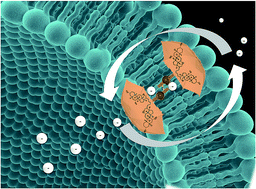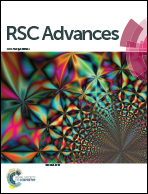Membrane active cationic cholic acid-based molecular umbrellas†
Abstract
Herein, we report the synthesis of an umbrella thread and its covalent dimer and their transmembrane transport properties under physiological conditions. The anion selectivity and the transport mechanism of the two compounds are discussed, as well as their interaction with microbial membranes. All the transport results indicate the formation of pores inside the phospholipid membranes. Both umbrella compounds principally favor the anion exchange across the membrane but the umbrella monomer (UM) is more sensitive to the hydrophilicity of the transported anion and favors the H+/Cl− co-transport in the presence of bicarbonate. The umbrella dimer (UD) shows a significant Cl−/HCO3− antiport process. This anion selectivity between the two umbrella compounds is an important finding and can be exploited for biological applications.


 Please wait while we load your content...
Please wait while we load your content...